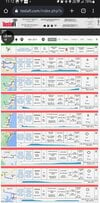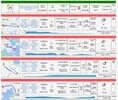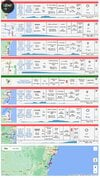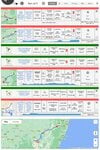I've been researching trading up from a 2020 Forester to the Model Y over the past few months, and with the recent price drop on the Model Y, this has significantly tipped the scales in favour of "now" rather than "soon-ish". Being in NSW, it effectively gives me a $6,500 discount because the Model Y with 19" and white interior now qualifies for the $3000 cash back. Looking at the RWD, not performance or long range - they're out of budget.
One reason I've been keen on swapping to an EV is that once a week, I need to do a 350-400km round trip (sometimes twice a week), so my annual drive is around 25,000 - 30,000km. I know that means the likelihood of popping some extra charge in it at the destination to have a comfortable reserve to get home with, and there is a Tesla supercharger within 3 minutes of the destination, and a 20 minute stop-over to charge is well within the schedule of how I currently do this trip anyway (it simply means my breakfast stop-over is in a different place).
The Forester has 95,000km on it after nearly 3 years.
This brings up the biggest question I can't seem to find an answer to (or I'm not looking in the right place).
If I'm doing 500-600km a week, and I supercharge once a week, and probably 2 more charges at home on AC (11kW) charging (once on return from this trip, and assume another after some other minor local driving to top up before that weekly trip), how long can I expect the battery to last? How many charges can it take, and how many kilometres am I likely to get out of this car?
Many thanks if anyone can shed some light on this, it would be hugely appreciated!
One reason I've been keen on swapping to an EV is that once a week, I need to do a 350-400km round trip (sometimes twice a week), so my annual drive is around 25,000 - 30,000km. I know that means the likelihood of popping some extra charge in it at the destination to have a comfortable reserve to get home with, and there is a Tesla supercharger within 3 minutes of the destination, and a 20 minute stop-over to charge is well within the schedule of how I currently do this trip anyway (it simply means my breakfast stop-over is in a different place).
The Forester has 95,000km on it after nearly 3 years.
This brings up the biggest question I can't seem to find an answer to (or I'm not looking in the right place).
If I'm doing 500-600km a week, and I supercharge once a week, and probably 2 more charges at home on AC (11kW) charging (once on return from this trip, and assume another after some other minor local driving to top up before that weekly trip), how long can I expect the battery to last? How many charges can it take, and how many kilometres am I likely to get out of this car?
Many thanks if anyone can shed some light on this, it would be hugely appreciated!






